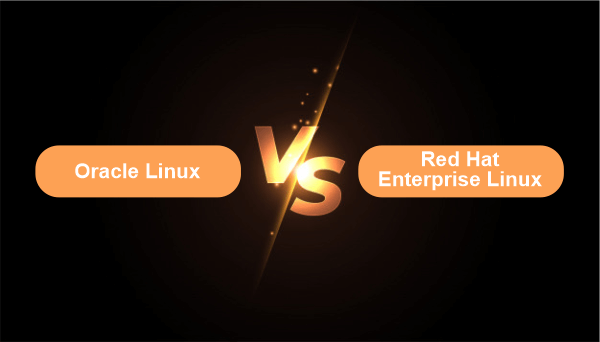Difference between Oracle Linux and Red Hat Enterprise LinuxThe Linux operating system is a very popular OS. The Linux architecture includes kernel, development tools, system libraries, and end-user tools. The kernel is the main core of the Linux OS, which is used to manage the files, processes, devices, and memory. Accessing kernel functionality is made easier via system libraries. The user may utilize the GUI or the CLI when using Linux OS. Oracle Linux and Red Hat Enterprise Linux OS are two of the many Linux distributions available. In this article, you will learn about the difference between Oracle Linux and Red Hat Enterprise Linux OS. But before discussing the differences, you must know about Oracle Linux and the Red Hat Enterprise Linux operating system. What is Oracle Linux?Oracle Linux is also referred to as Oracle Enterprise Linux. It is a free Linux distro that is developed by Oracle. It is available under the GNU and contains large community support. This Linux variant is used by Oracle Cloud and Engineering Systems, including Oracle Exadata. Users may download this OS through the Oracle Software Delivery Cloud or its official site. Users may develop apps and use and distribute these apps without any cost. The Oracle Linux OS support program offers commercial and professional assistance with installing Oracle Linux, RHEL, and CentOS. Over 15,000 users of Oracle Linux were members of the support program as of 2016. Features of Oracle LinuxThere are various features of Oracle Linux. Some main features of Oracle Linux are as follows:
What is Red Hat Enterprise Linux?Red Hat Enterprise Linux (RHEL) is a commercial open-source Linux distribution which is created by Red Hat. It is available on the server, and desktop editions for x86-64, IBM Z, ARM64, and Power ISA. Fedora Linux act as its upstream source. The RHEL platform is primarily focused on all official Red Hat support and training, as well as the Red Hat Certification Program. The first variant of RHEL was known as Red Hat Linux Advanced Server. In 2003, Red Hat produced two variants, Red Hat Enterprise Linux ES and Red Hat Enterprise Linux WS, renamed Red Hat Linux Advanced Server "Red Hat Enterprise Linux AS". Red Hat employs strong trademark regulations to reduce the free re-distribution of its officially supported versions of RHEL, even though the source code is publicly available. Third-party derivatives may be made and disseminated when non-free elements like Red Hat's trademarks have been removed. Some examples of RHEL contain commercial forks such as Oracle Linux and community-supported distributions such as Rocky Linux and AlmaLinux. Features of Red Hat Enterprise Linux Operating SystemThere are many features of the Red Hat Enterprise Linux OS. Some main features of Red Hat Enterprise Linux OS are as follows:
Key differences between Oracle Linux and Red Hat Enterprise Linux OS
Here, you will learn about the various key differences between Oracle Linux and RHEL OS. Some main differences between Oracle Linux and RHEL OS are as follows:
Head-to-head comparison between Oracle Linux and Red Hat Enterprise LinuxHere, you will learn about the head-to-head comparison between Oracle Linux and RHEL. Some main differences between Oracle Linux and RHEL are as follows:
ConclusionThere are two Linux distributions: Oracle Linux and RHEL. Both OS are open source and use a single kernel. The fundamental distinction between Oracle Linux and RHEL is that Oracle Cooperation created Oracle Linux, which is commonly utilized for Enterprise and Cloud computing. In contrast, Red Hat Inc. created RHEL, particularly for the commercial market. |
 For Videos Join Our Youtube Channel: Join Now
For Videos Join Our Youtube Channel: Join Now
Feedback
- Send your Feedback to [email protected]
Help Others, Please Share









